When it comes to the China train tour, you must be curious about how to complete the journey by taking the high-speed rail. We have considerately prepared 14 days China train tour from Hong Kong for you. If you choose this train tour, you can enjoy unique scenic spots in Hong Kong and Guilin and experience the differences between island scenery and natural landscape. You can also see giant pandas, China’s national treasure in Chengdu. What a rare opportunity it is! Moreover, there are many stories waiting for you to discover from the dramatic landscape of Zhangjiajie, and the delicious food in Xi’an is also not supposed to be missed. Then, taking the estimated train Xi’an to Beijing will be full of joy. China’s economic and cultural connotations are vividly reflected in the capital, Beijing. What are you still hesitating about? All you have to do is join our train journey from Hong Kong to Beijing.

Welcome to Hong Kong - A highly prosperous free port and international metropolis in China. The local tour guide has been waiting at the airport for a long time, and you can see him holding up the pick-up sign with your name. The guide will take you to the hotel and you can have a good rest. Hong Kong includes Hong Kong Island, Kowloon, the New Territories, and the surrounding 262 islands. The total land area is 1106.66 square kilometers while the sea area is 1648.7 square kilometers. On the way to the hotel, you can see the bustling streets in Hong Kong.
After enjoying the breakfast provided by the hotel, you will visit Victoria Peak, which is located in the central and western district of Hong Kong. Arriving at the attraction, you can take the Peak Tram to the peak where stands the well-known Peak Tower. It is seven stories high and has a total area of 10,400 square meters (112,000 square feet). The Peak Tower integrates entertainment facilities, shops and restaurants. Moreover, on the rooftop of the Peak Tower at an altitude of 428 meters, it is the Sky Terrace 428. You can enjoy 360-degree views of Hong Kong, including the scenery on both sides of the Victoria Harbour, as well as the natural scenery of the South China Sea here.
Then you will come to the Aberdeen Fishing Village to relax your mind, where you can enjoy the sea breeze along the coastline. And you can also feel the simplicity and tranquility of life in such a fishing village. After that, your tour guide will drive you to the Stanley Market, located at the southern end of Hong Kong Island. There are many Chinese tenement buildings in the Stanley Market and all the shops and furnishings here have a sense of age. You can find kinds of goods here. Not only the souvenirs but also those Chinese handicrafts, clothes, and oil paintings can be bought in the market. You can also find small restaurants to taste local food and even small shops specializing in foreign currency exchange which is very convenient. What’s more, on the second weekend of every month, Stanley Artsmart will be held in Stanley Market for artists to display their works. It means that you may enjoy an unexpected exhibition.
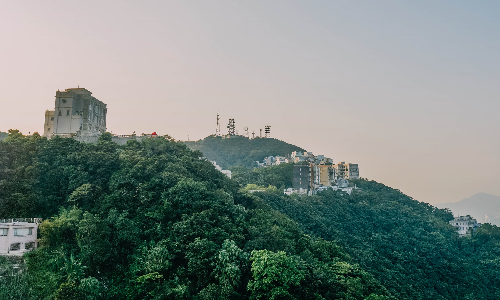
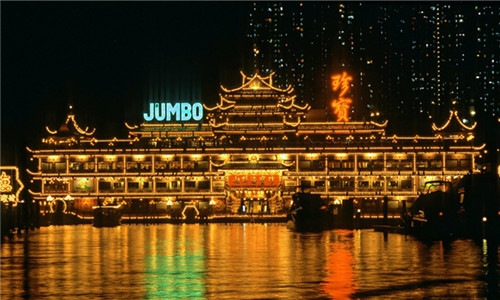
 Guilin
Guilin This morning, you will be driven to the train station to take the estimated train G408 12:05/15:25 to Guilin. On September 23, 2018, the Hong Kong section of the Guangzhou - Shenzhen - Hong Kong high-speed railway was put into operation. From then on, Guilin has officially connected with Hong Kong by China bullet train, and it only takes 3 hours and 16 minutes to travel from Guilin to Hong Kong. This change not only brings convenience to people’s work and life but also promotes the development and linkage of tourism between the two places. Your local guide is waiting for you at Guilin West Railway Station. She will hold up your name sign, which you can see as soon as you get out of the station.
Guilin, located in the northeast of Guangxi Province, is an important junction between the “Belt and Road”. What’s more, it is a mountainous and hilly area with typical karst landforms. In 2014, the karst landforms in southern China, represented by the landscape of Guilin, were included on the “World Natural Heritage List” by UNESCO. We hope the rest of your trip to Guilin will bring you a unique experience!
As usual, the hotel will provide a buffet breakfast for you. After that, we will drive 45 minutes to Mopanshan Pier, nearly 25 kilometers away from the city center, which is in the southeast of Guilin. Upon arrival at the pier, you will board on the Li River Cruise and start to explore the beautiful scenery on both sides of the Li River. What is worth mentioning is the Yellow Cloth Shoal, the essential sightseeing point on the Li River. The water surface here is as flat as a mirror, and it’s difficult for you to distinguish between the green mountains and the reflection in the water on sunny days. It is also the best place for photography along the river. More importantly, the new version of 20 yuan RMB banknotes has a pattern on the back which is taken from the Yellow Cloth Shoal. Therefore, many tourists come to the scenic spot with 20 yuan banknotes in hand to take photos.
After enjoying lunch on the cruise, you will arrive in Yangshuo. The tour guide will arrange for tourists to disembark and visit Yangshuo West Street. Yangshuo West Street is the oldest street in Yangshuo County. In the early 1970s, Yangshuo started to receive foreign visitors. The western tourists showed a keen interest in local architecture. The streets here are paved with local marble. The winding streets are not as wide as the roads in big cities, but they reflect the characteristics of traditional Chinese villages. The dwellings on both sides of West Street are mostly old buildings from the 60s and 70s. Most of them are low brick houses. The combination of white walls and red wooden windows shows a typical Chinese style.
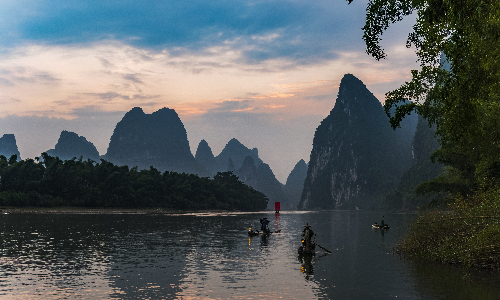
 Chengdu
Chengdu Today, you will arrive in Chengdu by taking the estimated train G2586 11:27/17:48. The completion of China’s fast train network has brought many conveniences for residents to travel. Compared with driving, taking high-speed train is faster more comfortable. Compared with airplane, the train ticket is much cheaper. This train will pass through Guizhou, Chongqing, and Sichuan Province. You can enjoy the scenery along the way or take a good rest on the train. The tour guide at Chengdu East Railway Station will pick you up and take you to the hotel.
Chengdu, the capital city of Sichuan Province, is located in the Western Sichuan Basin. It is a famous historical and cultural city and is rich in natural resources and tourism resources. Famous attractions include Jinli Street, Chengdu Wuhou Shrine Museum, Kuan Zhai Alley, etc.
This morning, you will visit Chengdu Research Base of Giant Panda Breeding, 10 kilometers from the city center, covering an area of 1,500 acres. It is a well-known research institution for the protection of rare and endangered giant pandas. It integrates scientific research, breeding education, and tourism of giant pandas. The giant panda is China’s national treasure and a symbol of peace and friendship. Giant pandas are always very docile. They rarely attack other animals or people. When they see people for the first time, they often use their forefeet to cover their faces or put their heads down. Except for spending time eating, pandas are used to resting and sleeping at other times. Giant pandas look cute even when they are sleeping, and you can see they put their bulky bodies in a variety of poses. Their favorite posture is to put their legs on the tree, covering their eyes with their hands as shy as a child. You can also see some giant pandas lying on the lawn eating bamboo, while others are basking in the sun. They look charmingly naive and very interesting.
After lunch, you will go to the next attraction - Chengdu Wuhou Shrine Museum. Chengdu Wuhou Shrine Museum is the only memorial temple in China where the monarch and the ministers are worshiped together. It is divided into three sections: Cultural Relics Area, West Area, and Jinli Folk Culture Area, covering a total area of 150,000 square meters. The most worth visiting place here is the Tomb of Liubei, also known as Hui Mausoleum. The mausoleum occupies an area of 2,000 square meters and is surrounded by a 180-meter long brick wall. In China, many famous ancient tombs have been robbed. However, the Tomb of Liubei has not been robbed since ancient times. This has something to do with a legend from the Tang Dynasty (618 - 907). There was a group of tomb robbers who came to the Tomb of Liubei on a night and punched a cave into the tomb. But they were astonished by the scene in front of them. The tomb was brightly lit, and Liu Bei was playing chess with his friends and ten warriors stand beside them. The tomb robbers fell to the ground and beg for mercy, but Liu Bei asked the warrior to give them wines and jade belts. The grave robbers drank the wine, tied the jade belt, and escaped from the cave, but just then the entrance of the cave was sealed. Robbers saw those jade belts had become poisonous snakes wrapped around their waists, and the wine in their mouths had turned into the glue that stuck to the mouth. This story continued to circulate, and no one has dared to do anything to the Tomb of Liubei ever since.
Not far from Hui Mausoleum is Jinli Street. The snacks on Jinli Street are very authentic. If you come to Jinli Street without tasting the snacks, it may be a great pity. Take Tangyouguo (a kind of sweet glutinous rice ball) as an example. It is made from glutinous rice, brown sugar, and sesame. Each glutinous rice ball is as big as a walnut and they are threaded with a bamboo skewer. Each Tangyouguo is round and brown-red, with a caramel aroma. There are about four or five Tangyouguo on each skewer, which only costs about 3-5 yuan. In fact, Tangyouguo appeared in the Song Dynasty (960 - 1279) and have a history of more than 1000 years.
Next, you will go to the People’s Park. If you are visiting Chengdu in summer, you can go to the air-raid shelter in the People’s Park to escape the heat. The People’s Park Air-raid Shelter was built in the 1970s, with a usable area of about 2,000 square meters. At present, about 1,000 square meters are open to the public as a natural air-conditioned room. In the air-raid shelter of People’s Park, if the outdoor temperature is close to 39°C (102.2°F), the temperature here is only 26°C (78.8°F). The whole air-raid shelter has a total of 5 caves connected. In addition to tables and chairs, each cave is equipped with a TV, radio, exhaust fans, dehumidifiers, and other equipment. Resting here is cooler but less humid than staying in an air-conditioned room all the time. It can be said that the People’s Park provides a cool and comfortable place for the public and tourists to enjoy themselves.
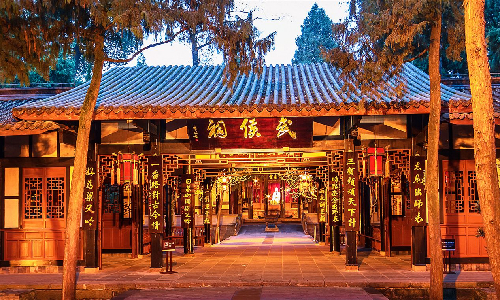
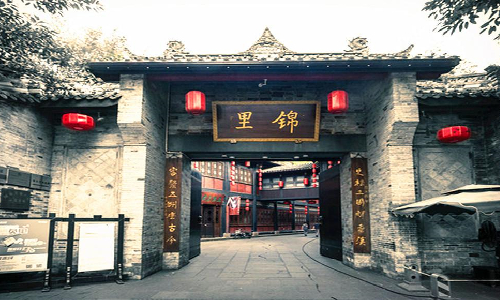
 Zhangjiajie
Zhangjiajie After breakfast, you will visit Kuan Zhai Alley, the last scenic spot that we arranged for you in Chengdu. It mainly consists of Kuan Alley, Zhai Alley, and Jing Alley which are arranged in parallel. Kuang Alley and Zhai Alley are the most popular places for tourists. Kuan Alley is a nostalgic area. There are many buildings from the late Qing Dynasty and the beginning of the Republic of China. Some of the courtyards here truly restore the life scenes of people in Western Sichuan. You can experience the life and feel the folk customs of ancient Chengdu. On the contrary, Zhai Alley is mostly occupied by stylish bars and restaurants, where tourists and young people spend a long time leisurely. You can have coffee or snacks, chat with your friends, and do whatever you find is enjoyable here.
The trip to Chengdu ends here, and we will drive you to the airport to take the estimated flight CA4377 14:00/15:30 to the next destination - Zhangjiajie. The local guide is well prepared for your next trip!
Zhangjiajie is located in the northwest of Hunan Province, with a total area of 9653 square kilometers, accounting for 4.5% of the area of Hunan Province. And Zhangjiajie National Forest Park is China’s first national forest park.
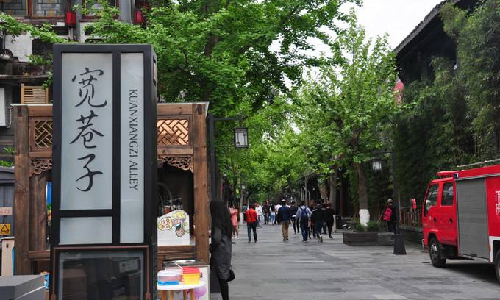
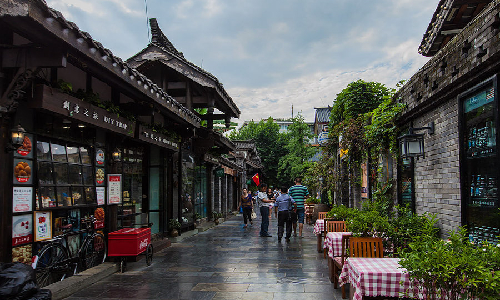
This morning, you will visit Zhangjiajie National Forest Park after having breakfast. The park covers a total area of 4,810 hectares. Golden Whip Stream is the core attraction of Zhangjiajie National Forest Park, and it has a total length of 5710 meters. It runs through the forest park from west to east, with picturesque scenery on both sides. Walking along the stream, you can see a group of mountains resembling lamps, giant axes, or dogs. There is also a huge rock cracked in the middle, named “Mother Rescue Peak”. The name is derived from an ancient Chinese myth. Legend has it that a beautiful and kind fairy called San Sheng Mu had felled in love with a scholar who is a mortal. The fairy’s brother Erlang Shen became furious when he learned the truth and blamed his sister for marrying a mortal privately and violating the law of heaven. So, he caught San Sheng Mu and locked her in a cave under a high mountain to punish her. Since then, San Sheng Mu has suffered for 16 years. In order to rescue his mother, Chen Xiang, the son of San Sheng Mu, worked hard to learn and practice skills. Finally, Chen Xiang split the mountain with a sharp axe and saved his mother. The huge rock you see now resembles the mountain that was split by Chen Xiang. Of course, there are also many other stories along Creek Golden Whip Creek.
In the afternoon, you can visit Tianzi Mountain, a place where the film Avatar was shot. You will take the cable car to get to the mountain peak. The scenery of Tianzi Mountain is the beauty of nature without traces of artificial cut and polish. The Natural Stone Bridge is the most typical one. This is a purely natural stone bridge. With the height of 350 meters, it is the tallest stone bridge in Zhangjiajie. It connects two mountain peaks and is surrounded by cliffs and clouds. Do you dare to walk on such a high natural stone bridge? After enjoying the great view, you can take the world’s fastest and highest sightseeing elevator - Bailong Elevator, down the mountain. From the top of the mountain to the foot of the mountain, the running height of Bailong Elevator is 326 meters, and the running time is only 66 seconds.
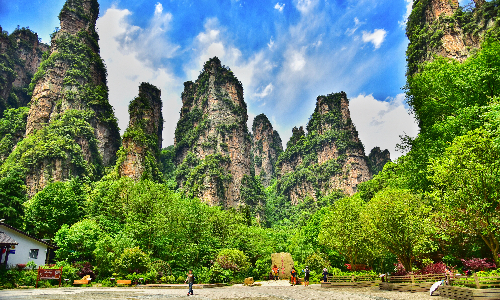
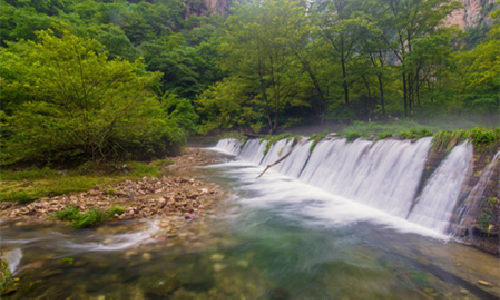
 Xi’an
Xi’an This morning, we will spend nearly 4 hours and drive you 358 kilometers to Changsha South Railway Station, which is in the southeast of Zhangjiajie. After lunch, you will take the estimated train G844 15:17/21:16 to Xi’an. China high-speed train always provides you adjustable seats for rest and there are a variety of foods for you to choose. But there is one thing to note: smoking is not allowed on the trains, even in the restrooms or at the junction of the carriages. There are many sensitive detection devices on the trains, and if someone smokes, the train will stop in an emergency. At the same time, smokers will be punished accordingly. Your guide will pick you up at Xi’an Railway Station and then you will be transferred to your hotel.
Xi’an, the capital of Shaanxi Province, is one of the four ancient capitals of China and it is also the important birthplace of Chinese civilization. In 2020, the permanent population of Xi’an reached 12.953 million. Have a good rest and tomorrow you will start to explore this historical and cultural city.
Today is the first day of your journey in Xi’an. You will visit the Terra Cotta Warriors and Horses Museum in Lintong District, which is in the northeast of the downtown area of Xi’an. We will drive 41 kilometers for about 50 minutes to arrive at the destination. The terracotta warriors and horses are burial objects of Emperor Qin Shihuang (the first emperor in China) made in the shape of soldiers, horses and chariots. In addition, some bronze swords were unearthed along with the terracotta warriors. One of the swords is the most eye-catching. When the archaeologists found it, it was bent and pressed into the soil. But when people took it out carefully, the bronze sword immediately restored its straight appearance. And there is no trace of corrosion on the sword. The blade is still very sharp, and it can cut 18 layers of paper at one time. You will marvel that 2000 years ago, the craftsmanship of sword casting was already so superb in China.
After lunch, you will go to the Big Wild Goose Pagoda, which is located in the south of Xi’an city with a height of 64.517 meters. In 652 A.D, the Big Wild Goose Pagoda was built to store the Buddhist scriptures and statues that Monk Xuanzang brought back to Xi’an. Xuanzang was an eminent monk in the Tang Dynasty and one of the four greatest translators of Buddhist scriptures in ancient China. During the third year of Zhenguan (629), Xuanzang decided to study the Buddhist doctrine in Tianzhu (ancient India). To this end, he set out along the Silk Road alone, overcoming numerous difficulties. After three years of the arduous journey, he finally arrived in the Buddhist holy land - Tianzhu. Then, Xuanzang spent another five years studying Buddhist doctrine there. In the nineteenth year of Zhenguan (645), Xuanzang returned to Xi’an and brought back lots of Buddhist scriptures. He devoted himself to the translation of Buddhist scriptures after the completion of the Big Wild Goose Pagoda.
The next place you will visit is Muslim Street, which is about 500 meters long and runs north-south. The Hui nationality is one of the ethnic minorities in China. At the end of the 1990s, some Hui people rented houses and operated the restaurants with Muslim characteristics in this street. Gradually, there were more and more restaurants, snack stores and souvenir shops on both sides of the Muslim Street, forming such a famous food and cultural street in Xi’an. There is a kind of delicacy that must not be missed: Pita Bread Soaked in Lamb Soup. The most traditional way to eat Pita Bread Soaked in Lamb Soup is to break the bread into pieces the size of soybeans. And then pour lamb soup into it. Some local people even spend one or two hours in breaking the bread. For them, this is not only a kind of food but also a kind of relaxation. Nowadays, it has become a representative of the famous food in Xi’an.
The last sight you will visit is the Great Mosque. Covering more than 13,000 square meters, it is an ancient architectural complex with a large scale and a long history. According to the existing inscriptions, the Great Mosque was built in 742 A.D, having a history of more than 1,250 years. The whole mosque looks rectangular along the east-west direction and is divided into four courtyards. Among them, at the center of the third courtyard is the Shengxin Minaret, which is a three-story octagonal Chinese-style minaret. The Minaret is often used as the highest place for muezzins to call Muslims together for worship. In traditional Arab mosques, two minarets are supposed to be built on each side of the temple, but there is only one in the Great Mosque which is built on the central axis of the mosque.
After that, you will be transferred back to your hotel.
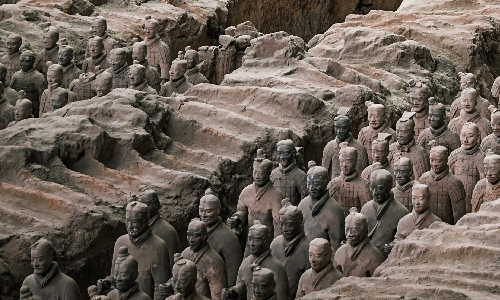
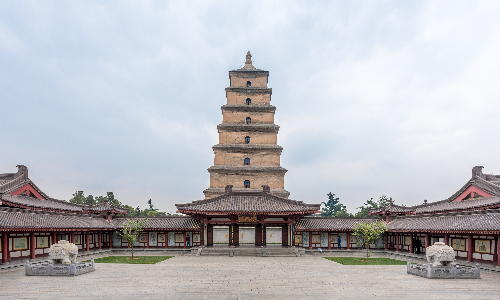
 Beijing
Beijing This morning, you will visit the Old City Wall, the best-preserved ancient city wall in China. Being built in 1370, the old City Wall is 12 meters high and has a rectangular outline with a circumference of 13.74 kilometers. As an important building to protect the inner city, the wall is as stable as a mountain and is highly defensive. The city wall divides the Xi’an city into inner city and outer city. What is the difference between them? There are no modern skyscrapers in the inner city. Most of them are ancient buildings that is not higher than the city wall. For example, the famous Bell Tower and Drum Tower are in the inner city, which can be visible from the city wall. On the contrary, outside the city walls are modern buildings, such as large-scale shopping mall, amusement park and so on. Standing on the city wall and looking at the different scenes on either side, you can feel the collision of history and modernity.
After lunch, we will drive you to the train station and you can take the estimated train G308 14:55/20:38 to Beijing. As usual, the local guide of Beijing will wait for you at the high-speed rail station and then you will be transferred to your hotel.
Beijing, the capital of China, is also China’s center of policy, culture, as well as scientific and technological innovation. And the city has 16 districts with a total area of 16410.54 square kilometers. Beijing is rich in various attractions. It will provide a different experience for you!
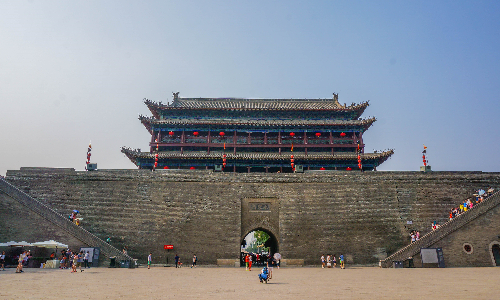
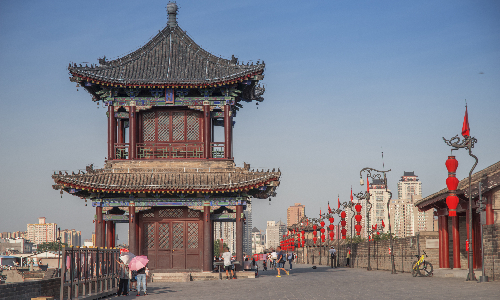
This morning, you will visit Tian’anmen Square. Tian’anmen Square was built in the 15th year of Yongle in the Ming Dynasty (1417). It is the most important city center square in China. The flag-raising ceremony is held every morning in Tian’anmen Square. The flagpole is 32.6 meters high and will not erode for 20 years. However, the national flag only rises to 28.3 meters each time. Do you know why? It is because the Communist Party of China was founded in July 1921, and the People’s Republic of China was founded on October 1, 1949. Twenty-eight years and three months passed between these two important dates. Therefore, the number 28.3 is used to record this extraordinary history.
Going further north is the Forbidden City (Closed on Mondays). The Forbidden City in Beijing began to be built in the fourth year of Yongle (1406) by the emperor Zhu Di (1360 - 1424), and it was completed in the eighteenth year of Yongle (1420). Covering an area of 720,000 square meters, the Forbidden City is 961 meters long from north to south and 753 meters wide from east to west. It is surrounded by a 10-meter-high city wall. There are 24 emperors in the Forbidden City who have ruled China, of which Kangxi, the fourth emperor of the Qing Dynasty is the one with the longest reign from 1661 A.D to 1722 A.D. According to historical records, Emperor Kangxi’s strategies in governing the country are worthy of recognition. To resist foreign aggression, the central government of Kangxi produced artillery at an unprecedented level in scale, quantity, type, and manufacturing technology. In addition, Emperor Kangxi not only supervised the construction of the Yellow River, but also visited incognito among the ordinary people to inspect the civil situation and the implementation of the policy. These are all the achievements of Emperor Kangxi.
In the afternoon, you will go to the Temple of Heaven. The Temple of Heaven, which was built in 1420 covering an area of 237 hectares. It was the place where the emperors of the Ming and Qing Dynasties worshiped heaven and prayed for good harvests. It mainly consists of the Hall of Prayer for Good Harvest, the Circular Mound Altar, and the Imperial Vault of Heaven. The north wall of the Temple of Heaven is round while the south wall is square. That is because people in ancient times had the idea that the sky was round and the earth was square.
The last place we have arranged for you today is the Summer Palace. Located in the western suburbs of Beijing, the Summer Palace was an imperial garden in the Qing Dynasty. It mainly consists of the Longevity Mountain and the Kunming Lake. In the northwest of Kunming Lake is the Marble Boat, a famous architectural treasure of the Summer Palace. Why did such a huge Marble Boat build in the Summer Palace? This stems from the idiom - the water supporting a ship can also upset it. It means that the emperor is like a boat, and the people are like the water. People can support the emperor and at the same time they can also overthrow the regime. So, the Marble Boat was built here to remind the emperor to understood the great power of the people and emphasized the importance of relying on the people.
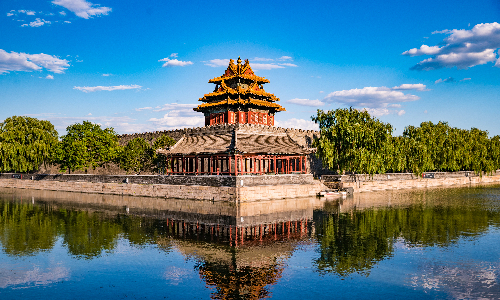
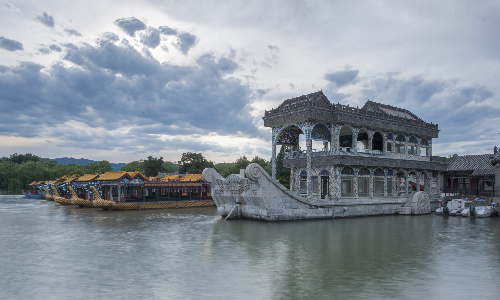
Today, we will drive you an hour and forty minutes (about 60 kilometers) to the Ming Tombs in the north direction. The Ming Tombs are located in a small basin, covering an area of 40 square kilometers. It is the tomb complex of thirteen emperors of the Ming Dynasty (1368 - 1644). Chang Tomb is the earliest to be built with the largest scale, and its ground buildings are also the most well-preserved. The owner of Chang Tomb is Zhu Di, the third emperor of the Ming Dynasty, who reigned from 1402 A.D to 1424 A.D. During Zhu Di’s reign, the imperial power was strengthened. To eliminate the reactionary people, he even personally led the army to fight against them. In addition, Emperor Zhu Di also presided over the dredging of the Beijing-Hangzhou Grand Canal. This has made the communication between the South and the North of China much closer. Many of his achievements made the Ming Dynasty flourish.
After lunch, you can visit Mutianyu Great Wall, 41 kilometers away from the Ming Tombs. We will drive to the northeast for about an hour to reach the destination. The Mutianyu Great Wall was built in 1368 A.D and has a total length of 5,400 meters. The wall remains intact, better reflecting the charm of the Great Wall. However, many tourists engrave and make graffiti on the walls while enjoying the beautiful scenery. Although the government has taken corresponding measures to stop tourists damaging the Great Wall, this kind of behavior has not been completely prevented. Therefore, on March 4, 2014, a graffiti area was set up on the Mutianyu Great Wall for tourists to sign and leave messages. Nowadays, an electronic graffiti wall is also added, which can not only satisfy the desire of some tourists to graffiti but also protect the Great Wall.
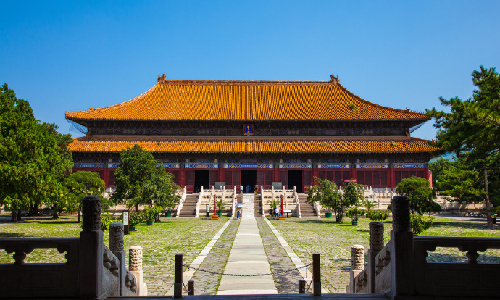
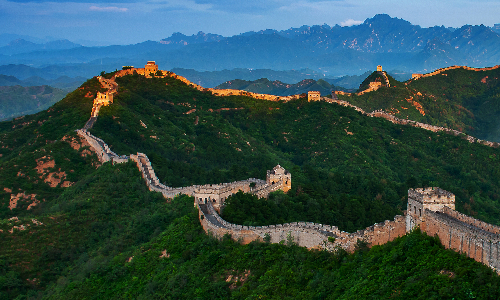
Today your 14-days China train tour comes to an end. Your tour guide will accompany you to the airport and say goodbye to you. Then you can board your flight back home.
Author: Jiaqi Liu
Proofreader: Betsy He
| City | Five Star hotel list | Four Star hotel list |
|---|---|---|
| Hong Kong | Harbour Grand Kowloon | Harbour Plaza North Point Hotel |
| Guilin | Lijiang Waterfall Hotel | Guilin Bravo Hotel |
| Chengdu | Sofitel Chengdu Taihe | Holiday Inn Express Chengdu Jinniu |
| Zhangjiajie | Zhangjiajie Qinghe Jinjiang International Hotel | Zhangjiajie Huatian Hotel |
| Xi'an | Tianyu Gloria Grand Hotel Xi'an | Sunworld Dynasty Hotel |
| Beijing | Sunworld Dynasty Hotel Beijing Wangfujing | Sunworld Hotel Wangfujing |
 |
![]() About your child or infant, please contact us for a discounted price.
About your child or infant, please contact us for a discounted price.



We started with a few days in Beijing & ended in Shanghai, from where we visited the Forbidden City and Great Wall. In between we visited Terra Cotta Warriors Museum, Panda Base, Shanghai Disneyland.

We had a wonderful holiday in China which will remain long in the memory. China is a breathtakingly beautiful country full of splendid temples and palaces, mountains and rivers, peaceful rural scenes and bustling shopping streets.
 QUICK ENQUIRY
QUICK ENQUIRY